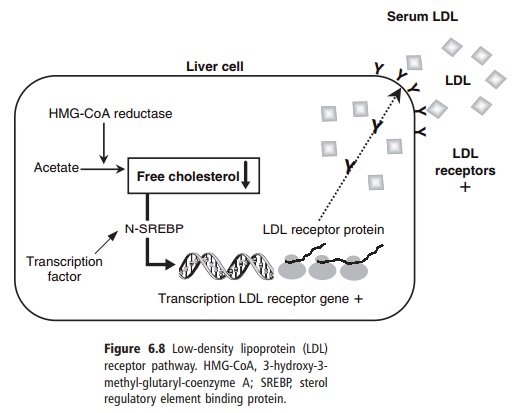Chapter: Introduction to Human Nutrition: Nutrition and Metabolism of Lipids
Saturated fatty acids and low-density lipoprotein cholesterol
Saturated fatty acids and low-density lipoprotein cholesterol
The most well-elucidated mechanism to explain how different dietary fats produce variable effects on LDL-cholesterol is through the LDL receptor pathway, the control of which has already been described. The ability of the cell to regulate its pool of free cholesterol depends to a large extent on the nature of the fatty acids available for esterification by the enzyme ACAT, an intracellular relative of LCAT. ACAT favors unsaturated fatty acids (MUFAs and PUFAs) as substrates for esterification, which utilizes free cholesterol within the cell. The resulting reduc-tion in intracellular free cholesterol stimulates the transcription of the LDL receptor gene and produc-tion of new LDL receptors through the SREBP mech-anism, and fall in circulating LDL as already described. Conversely, SFAs are poor substrates for ACAT, and their presence in the cell exerts the opposite effect on free cholesterol levels, thus increasing circulating LDL cholesterol and total serum cholesterol (Figure 6.8). Fatty acids may also exert direct effects on the activity of LDL receptors by altering the composition of membrane phospholipids and thus membrane fluid-ity. Alternatively, there is evidence to suggest that dietary PUFA could upregulate LDL receptors indi-rectly, by increasing the cholesterol content (litho-genicity) of bile and in this way accelerate the excre-tion of cholesterol.

Related Topics